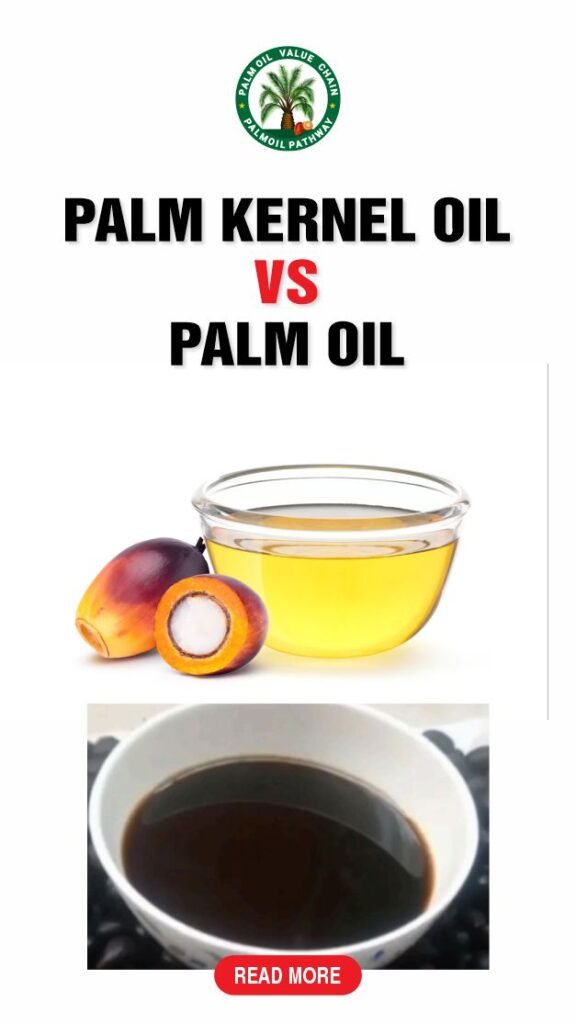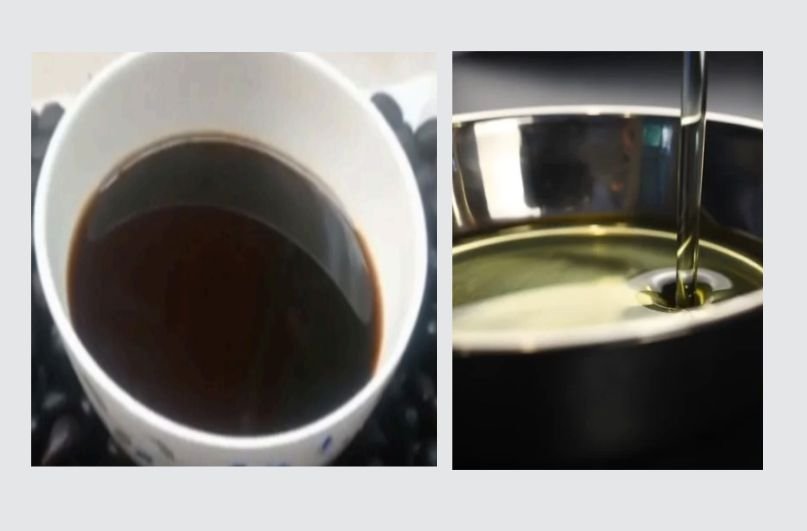Palm kernel oil vs palm oil, same tree, different oils. Palm kernel oil is just one type of palm oil. This post clears the confusion and breaks down what truly sets them apart.
The two terms are often used interchangeably, yet they aren’t the same. While both come from the fruit of the oil palm tree, they’re extracted from different parts and serve distinct purposes.
Palm oil is an umbrella term that includes several oils derived from the palm fruit, including the lesser-understood palm kernel oil.
This distinction is more than technical; it affects how these oils are used in cooking, cosmetics, and food processing.
Many people confuse palm kernel oil with other types, especially because labels rarely clarify the difference.
If you’ve ever wondered why two “palm oils” can look, taste, and behave so differently, you’re not alone.
This post clears up the confusion and gives you a clear understanding of what sets palm kernel oil apart from the rest of the palm oil family.

Table of Contents
- Palm Kernel Oil vs Palm Oil: Defining the Terms
- Differences Between Palm Kernel Oil and Palm Oil
- Nutritional Profiles
- Culinary Uses
- Conclusion
Palm Kernel Oil vs Palm Oil: Defining the Terms
Palm Kernel Oil
Palm kernel oil is a type of palm oil extracted from the seed, or kernel, of the oil palm fruit.
It’s rich in saturated fats and has a creamy texture, making it popular in processed foods, confectionery, and cosmetics.
Though it comes from the same fruit as other palm oils, its composition, appearance, and usage differ significantly from oils derived from the fruit’s flesh.
Defining Palm Oil
Palm oil is an umbrella term for several oils derived from the fruit of the oil palm tree, particularly from the fleshy mesocarp, but not excluding palm kernel oil.
It includes crude palm oil, red palm oil, and refined palm oil, each processed to varying degrees.
Palm oil is widely used in cooking, packaged foods, soaps, and biofuels.
It’s often misunderstood as a single oil when in fact, it represents a diverse category with distinct types and applications.
Related Posts
Nutritional Profile of Palm Kernel Oil
Differences Between Palm Kernel Oil and Palm Oil
The confusion between palm kernel oil vs palm oil is a global one and there is no end in sight.
While many refer to two types of oil from the palm oil fruit, others lump all the oils into one – palm oil.
Let’s take a look:
Palm Kernel Oil is a Type of Palm Oil
Palm kernel oil is one of several palm oils. It comes from the seed or kernel inside the fruit, unlike other palm oils extracted from the fruit’s outer flesh.
This difference in origin influences its properties and uses.
Palm Oil Refers to Mesocarp Oils
When we say palm oil, we mean the oils pressed from the fruit’s fleshy part called the mesocarp.
This includes crude palm oil, red palm oil, and refined palm oil, which all differ from palm kernel oil in composition and flavor.
Source Difference Affects Composition
Because palm kernel oil is from the seed, it contains more saturated fat and fewer carotenoids compared to palm oil from the mesocarp.
These variations affect their texture, nutritional value, and how they behave during cooking or manufacturing.
Usage and Flavor Vary
Palm oil has a richer color and stronger taste, making it ideal for cooking and food products.
Palm kernel oil is milder and more stable at high temperatures, commonly used in baked goods, confectionery, cosmetics, and soaps.
Nutritional Profiles
Palm oil and palm kernel oil come from different parts of the palm fruit, and their nutrition reflects that.
Knowing these differences helps you make smarter choices for cooking and food products.
Saturated and Unsaturated Fats: What You Should Know
Palm oil comes from the fruit’s fleshy part and contains about 50% saturated fats like palmitic acid, plus 40% unsaturated fats such as oleic and linoleic acids.
This balance can support healthy cholesterol levels when you use it moderately.
Vitamins and Antioxidants: The Benefits of Palm Oil
Palm oil also contains vitamin E compounds called tocopherols and tocotrienols.
These antioxidants help protect your cells from damage caused by free radicals, which may lower the risk of some chronic diseases.
Palm Kernel Oil’s Fat Profile: High Saturation
Palm kernel oil is taken from the seed inside the fruit. It has about 80% saturated fats, mostly lauric acid.
This high level can raise cholesterol if you consume too much, so it’s best to use it carefully.
Nutritional Value: Why Palm Kernel Oil Differs
Unlike palm oil, palm kernel oil has fewer vitamins and antioxidants.
That makes it less helpful for nutrition but stable for baking and frying because it holds up well at high temperatures.
Culinary Uses
Palm kernel oil and palm oil come from the same fruit, but behave differently in your kitchen.
Knowing how to use each can help you get the best flavor and texture for your meals.
Palm Oil: Great for Frying and Flavor
Palm oil comes from the fruit’s flesh and has a smoke point around 450 degrees Fahrenheit.
That means it works well for frying, sautéing, and making rich sauces. Its mild buttery taste adds flavor without overpowering your dish.
You’ll find it in many West African and Southeast Asian recipes, especially stews, fried foods, and sauces.
Palm Kernel Oil: Ideal for Baking and Creamy Textures
Palm kernel oil comes from the seed and has a similar smoke point but a stronger coconut-like flavor.
This makes it perfect for baked goods, desserts, and vegan recipes.
It works well as a butter substitute because it firms up with a creamy texture, adding richness to biscuits, confections, and some savory dishes.
Choosing Between Palm Oil and Palm Kernel Oil
Think about the flavor and cooking method when you pick your oil. Use palm oil if you want a subtle taste and high heat stability.
Go for palm kernel oil if you want a tropical flavor or need a butter alternative. Both have their place depending on what you’re cooking.
Conclusion
Understanding the palm kernel oil vs palm oil dichotomy helps you make smarter choices in cooking and shopping.
Palm oil comes from the fruit’s flesh and offers healthy fats and vitamins, making it versatile for frying, baking, and processed foods.
Palm kernel oil comes from the seed, has more saturated fat, and is valued for its stability at high heat and long shelf life.
Knowing these details supports health-conscious decisions and fits different cooking needs.
Beyond nutrition, palm oil production impacts the environment through deforestation and habitat loss.
Choosing sustainably and staying informed helps protect the planet while meeting your dietary and cooking preferences.
